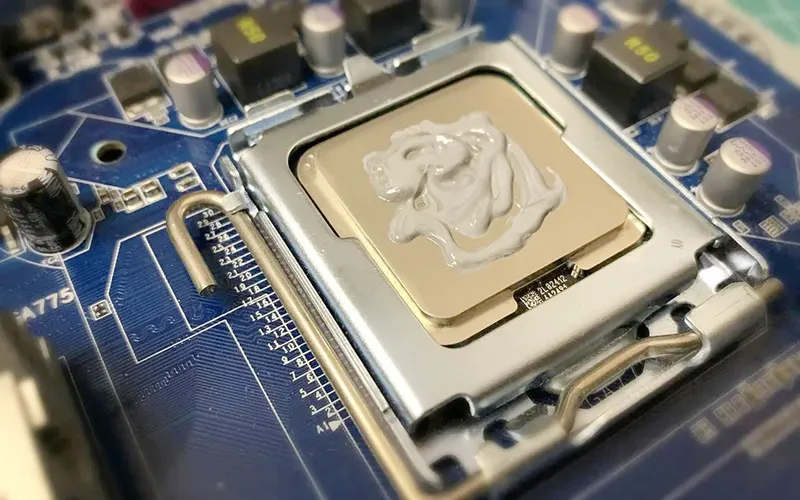Does Thermal Conductive Paste Really Matter That Much?
- Posted on:2023-11-21 09:53:00
- Source:AOK Thermal Pad Manufacturer FAQs
Thermal conductive paste, also known as thermal grease or thermal paste, does play a significant role in thermal management and can have a substantial impact on the performance of heat-generating components, such as CPUs, GPUs, or power electronics.
The primary purpose of thermal paste is to fill the microscopic air gaps and imperfections between the mating surfaces of the component (e.g., CPU) and the heatsink or cooling solution. These gaps can hinder heat transfer, leading to increased thermal resistance and higher operating temperatures. The thermal paste helps improve thermal conductivity and facilitates efficient heat transfer between the component and the heatsink.
Here are a few reasons why thermal conductive paste matters:
Enhanced Heat Transfer: Thermal paste, when applied correctly, fills in the gaps and air pockets between the component and the heatsink, ensuring better contact and improved heat transfer. It helps bridge the thermal interface between the two surfaces, allowing heat to flow more efficiently and reducing thermal resistance.
Temperature Reduction: Effective heat transfer through the use of thermal paste can help lower the operating temperature of the component. Lower temperatures contribute to improved performance, reduced thermal throttling, and increased lifespan of the component.
Stability and Reliability: By ensuring proper heat dissipation, thermal paste helps maintain stable operating temperatures. This stability can contribute to the long-term reliability and durability of the component, reducing the risk of overheating-related issues and potential damage.
Even Distribution of Heat: Thermal paste helps in achieving a more uniform distribution of heat across the component's surface. This can prevent hot spots and temperature differentials, improving overall thermal management and minimizing the risk of localized overheating.
It's important to note that the quality and characteristics of the thermal paste, such as thermal conductivity, viscosity, and curing properties, can influence its effectiveness. Choosing a high-quality thermal paste specifically designed for the intended application can lead to better thermal performance and improved heat dissipation.
While thermal paste is a critical component in thermal management, it's worth mentioning that the design of the cooling solution, including the heatsink, fan, or liquid cooling system, also plays a vital role in overall heat dissipation. A well-designed cooling system in combination with a suitable thermal paste can effectively manage heat and optimize the performance and longevity of heat-generating components.
If you would like to learn more about AOK performance thermal materials, please visit our website at www.aok-technologies.com


